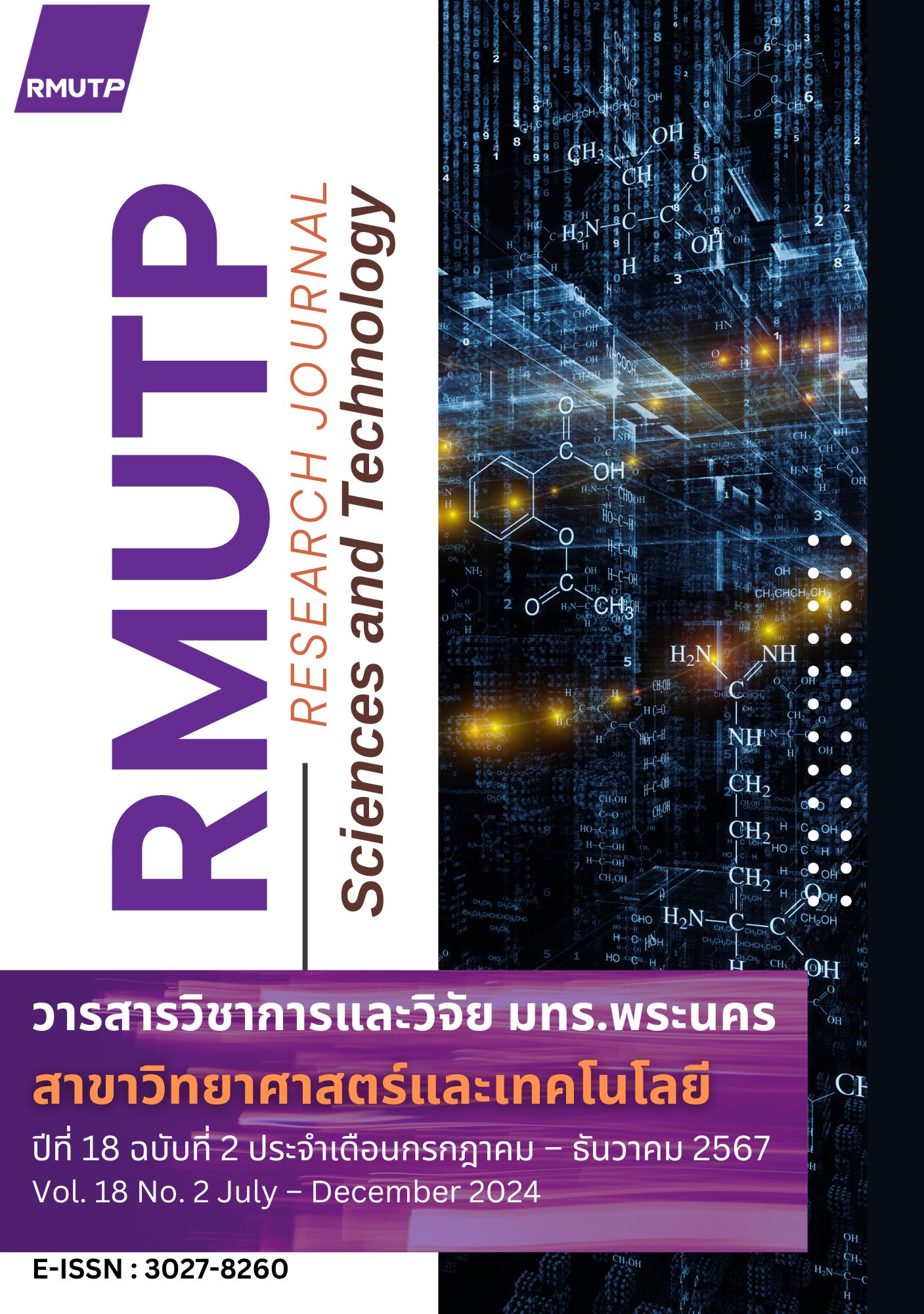Impact on Power Quality When Using Fast Charge Type of Battery Charging Station for Electric Vehicles
Main Article Content
Abstract
This article presents the impact on power system when operating fast charge type of battery charging stations for electric vehicles. In this work, the data analyzed were obtained from measurements that directly affect the three-phase power system at the input side of the electric vehicle battery charging station. The measured values were root mean square voltage (Vrms), root mean square current (Irms), the total harmonic distortion of voltage (% THDV), and the total harmonic distortion of current (% THDI). To store data will be done since it has not been charged, while starting to charge until the electric vehicle battery is fully charged. The vehicles used for testing belong to the Electricity Generating Authority of Thailand (EGAT), which is an electric powered minibus that uses a 120 kW-h lithium-ion battery. The charging station used for testing also belongs to the Electricity Generating Authority of Thailand, the input voltage is AC 400 V, the output voltage is DC 250 to 750 V, and the plug used for charging is a CCS-Type type 2. Once the data is complete, those data are then used to create a graph to analyze the impact on power system. The results of the data analysis revealed that while operating fast charge type of battery charging station for electric vehicles, there are three main effects on power quality of the power system: voltage effect, harmonic effect and the impact on unbalance of power system.
Article Details

This work is licensed under a Creative Commons Attribution-NonCommercial-NoDerivatives 4.0 International License.
ลิขสิทธ์ ของมหาวิทยาลัยเทคโนโลยีราชมงคลพระนครReferences
Policy Research Department, National Science and Technology Development Agency (NSTDA), “Electric Vehicle Industry,” Study Report, pp. 11–18, Sep. 2017.
Office of Policy and Planning, Ministry of Energy, “Report on The Performance According to The Plan to Drive Thailand's Smart Grid in The Short Term for The Year 2020,” Annual Report, pp. 1–38, Feb. 2021.
Joint Working Group: Electricity Generating Authority of Thailand (EGAT), Metropolitan Electricity Authority (MEA) and Provincial Electricity Authority (PEA), “Electrical Infrastructure Development Plan Report,” Annual Report, pp. 5–20, Nov. 2016.
Office of Policy and Planning, Ministry of Energy, “EV Charging Station,” Handbook for Developing Battery Charging Stations for Electric Vehicles to Support the Country's Goals for the Promotion of Electric Vehicles, pp. 4–5, Feb. 2022.
C.-L. Su, J.-T. Yu, H.-M. Chin and C.-L. Kuo, “Evaluation of power-quality field measurements of an electric bus charging station using remote monitoring systems,” in proceeding of 2016 10th International Conference on Compatibility, Power Electronics and Power Engineering (CPE-POWERENG),Bydgoszcz, Poland,2016,pp.58-63.
T. Fujun, X. Ruiheng, C. Dong, R. Lijia, Y. Quanning and Z. Yan, “Research on the harmonic characteristics of electric vehicle fast charging stations,” in proceeding of 2017 2nd International Conference on Power and Renewable Energy (ICPRE), Chengdu, China, 2017, pp. 805-809.
T. Pothinun and S. Premrudeepreechacharn, “Power Quality Impact of Charging Station on MV Distribution Networks: A Case Study in PEA Electrical Power System,” 2018 53rd International Universities Power Engineering Conference (UPEC), Glasgow, UK, 2018.
F. Chen, Q. Zhong, H. Zhang, M. Zhu, S. Müller, J. Meyer and W. Huang, “SURVEY OF HARMONIC AND SUPRAHARMONIC EMISSION OF FAST CHARGING STATIONS FOR ELECTRIC VEHICLES IN CHINA AND GERMANY,” CIRED 2021 - The 26th International Conference and Exhibition on Electricity Distribution, Online Conference, 2021.
P. Khemmook, S. Thongsuk and P. Inban “The Impact Study of Electric Vehicle Quick Charger to Electrical System for Business in Private Sector,” The Journal of King Mongkut's University of Technology North Bangkok, vol. 32, no. 4, pp. 843-853, Oct-Dec 2022.
King Mongkut's University of Technology Thonburi, “Study on Technology and Innovations in Electric Vehicles,” The Complete Report of The Electric Vehicle Technology Education Project, pp. 1–29, Nov. 2017.
U. Vaidya, Composites for Automotive, Truck and Mass Transit: Materials, Design, Manufacturing, 1st ed. Lancaster, PA: Destech Publications Inc., 2010.
https://www.nissan.co.th/experience-nissan/Nissan-EV/EV-charger-type.html
K. Bhumkittipich, Power System Quality, 1st ed. Bangkok: Triple Education Co., Ltd., 2015.
IEEE std 1159-1995, IEEE Recommended Practice for Monitoring Electric Power Quality.
S. Chaladying and N. Rugthaicharoencheep, “Implement of Harmonic Current Impact on Power Factor Correction Device,” The Journal of Industrial Technology, vol. 12, no. 1, pp.109-120, Jan-Apr 2016.
P. Ngamprasert, N. Chattranont and N. Rugthaicharoencheep, “The Analysis Harmonic for Connect Grid Photovoltaic Rooftop Synergy Distribution System,” 2022 International Electrical Engineering Congress (iEECON), Khon Kaen, Thailand, 2022.
R. Dugan, M. McGranaghan, S. Santoso and H. Wayne Beaty, Electrical Power Systems Quality, 3rd ed. New York: McGraw Hill, 2012.


